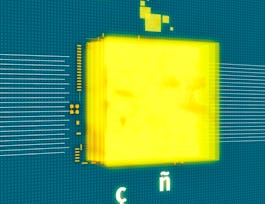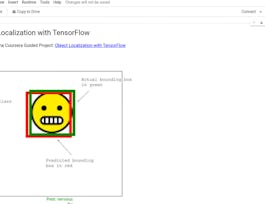If you are a software developer who wants to build scalable AI-powered algorithms, you need to understand how to use the tools to build them. This Specialization will teach you best practices for using TensorFlow, a popular open-source framework for machine learning.


Natural Language Processing in TensorFlow
This course is part of DeepLearning.AI TensorFlow Developer Professional Certificate

Instructor: Laurence Moroney
Sponsored by IEM UEM Group
147,103 already enrolled
(6,495 reviews)
Recommended experience
What you'll learn
Build natural language processing systems using TensorFlow
Process text, including tokenization and representing sentences as vectors
Apply RNNs, GRUs, and LSTMs in TensorFlow
Train LSTMs on existing text to create original poetry and more
Details to know

Add to your LinkedIn profile
4 assignments
See how employees at top companies are mastering in-demand skills

Build your Machine Learning expertise
- Learn new concepts from industry experts
- Gain a foundational understanding of a subject or tool
- Develop job-relevant skills with hands-on projects
- Earn a shareable career certificate from DeepLearning.AI


Earn a career certificate
Add this credential to your LinkedIn profile, resume, or CV
Share it on social media and in your performance review

There are 4 modules in this course
The first step in understanding sentiment in text, and in particular when training a neural network to do so is the tokenization of that text. This is the process of converting the text into numeric values, with a number representing a word or a character. This week you'll learn about the Tokenizer and pad_sequences APIs in TensorFlow and how they can be used to prepare and encode text and sentences to get them ready for training neural networks!
What's included
13 videos7 readings1 assignment1 programming assignment3 ungraded labs
Last week you saw how to use the Tokenizer to prepare your text to be used by a neural network by converting words into numeric tokens, and sequencing sentences from these tokens. This week you'll learn about Embeddings, where these tokens are mapped as vectors in a high dimension space. With Embeddings and labelled examples, these vectors can then be tuned so that words with similar meaning will have a similar direction in the vector space. This will begin the process of training a neural network to understand sentiment in text -- and you'll begin by looking at movie reviews, training a neural network on texts that are labelled 'positive' or 'negative' and determining which words in a sentence drive those meanings.
What's included
12 videos4 readings1 assignment1 programming assignment3 ungraded labs
In the last couple of weeks you looked first at Tokenizing words to get numeric values from them, and then using Embeddings to group words of similar meaning depending on how they were labelled. This gave you a good, but rough, sentiment analysis -- words such as 'fun' and 'entertaining' might show up in a positive movie review, and 'boring' and 'dull' might show up in a negative one. But sentiment can also be determined by the sequence in which words appear. For example, you could have 'not fun', which of course is the opposite of 'fun'. This week you'll start digging into a variety of model formats that are used in training models to understand context in sequence!
What's included
10 videos4 readings1 assignment1 programming assignment6 ungraded labs
Taking everything that you've learned in training a neural network based on NLP, we thought it might be a bit of fun to turn the tables away from classification and use your knowledge for prediction. Given a body of words, you could conceivably predict the word most likely to follow a given word or phrase, and once you've done that, to do it again, and again. With that in mind, this week you'll build a poetry generator. It's trained with the lyrics from traditional Irish songs, and can be used to produce beautiful-sounding verse of it's own!
What's included
14 videos5 readings1 assignment1 programming assignment3 ungraded labs
Instructor

Offered by
Why people choose Coursera for their career




Learner reviews
6,495 reviews
- 5 stars
72.94%
- 4 stars
18.85%
- 3 stars
5.58%
- 2 stars
1.56%
- 1 star
1.04%
Showing 3 of 6495
Reviewed on Sep 27, 2020
Was really easy as compared to CNNs. I wish this had more notebook evaluations like the course for CNNs since that really made me feel good overcoming all the tasks, especially the last one.
Reviewed on Dec 29, 2019
This is good course for those who are want to practice in natural language processing in Tensor Flow and also learned sentiment analysis it is having wonderful stuff for beginners
Reviewed on Mar 22, 2021
One of the best specialisations I have ever had in my professional carrier. Of course, some supplementary information is needed for those who are willing to become a specialist in the area.
Recommended if you're interested in Data Science

Imperial College London

Coursera Project Network

University of Colorado System

Open new doors with Coursera Plus
Unlimited access to 10,000+ world-class courses, hands-on projects, and job-ready certificate programs - all included in your subscription
Advance your career with an online degree
Earn a degree from world-class universities - 100% online
Join over 3,400 global companies that choose Coursera for Business
Upskill your employees to excel in the digital economy

